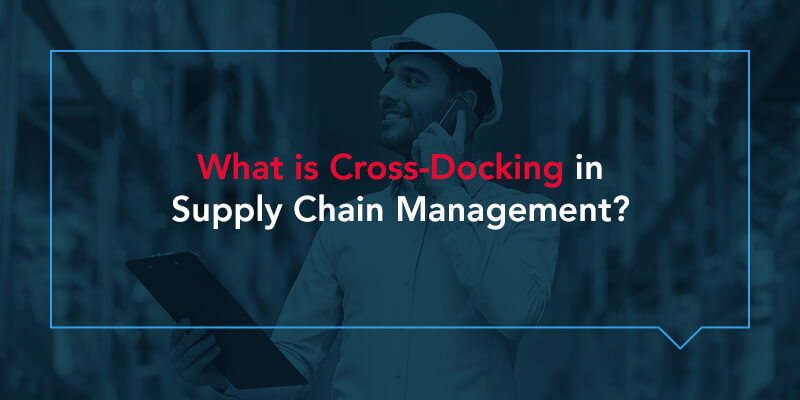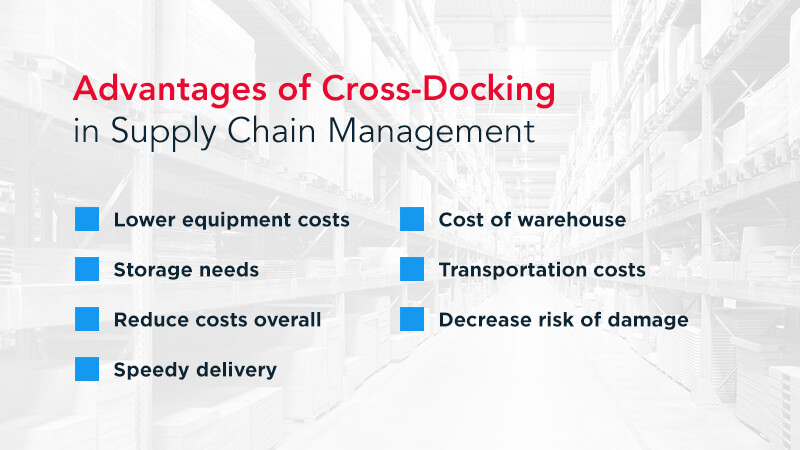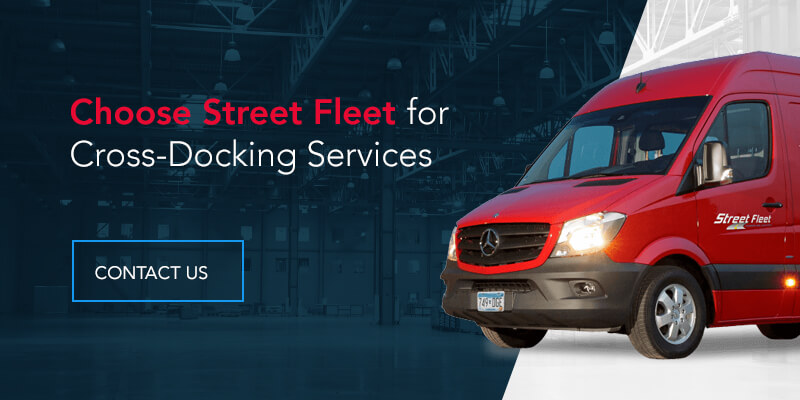
The goal of any company’s logistics or supply chain operations is to be as productive and efficient as possible to help meet customer and business needs. Various procedures allow logistics operations to function smoothly, and the best method for any business depends on their products, type of business, the layout of their docking terminal and more. If you’re trying to find the best strategy for your supply chain process, consider implementing cross-docking as a logistics method.
With the right conditions and implementation, cross-docking can be a helpful logistics strategy for many companies. Learn more about what cross-docking means and how you can use it effectively in your facility.
What Is Cross-Docking?
Cross-docking is a logistics strategy in which you unload products received from a manufacturer’s truck or trailer and directly load them onto an outbound truck to continue their journey. This procedure eliminates the need for storage or handling between transportation. Instead of using a warehouse, the distribution center or docking terminal acts as a sorting center before the products are loaded onto the next truck. Cross-docking allows customers to receive shipments faster because of the eliminated warehousing or handling step.
This process is typically completed at a cross-docking terminal, which includes multiple dock doors and platforms. These facilities allow inbound trucks to unload products and outbound trucks to easily accept the delivery and sort them into their trailer. The space inside the docking terminal is small and only has room for unloading, sorting and reloading products to their designated truck, not storage.
Transporting goods with cross-docking eliminates the storage or handling step in the logistics process. The inbound products arrive at a receiving dock at the docking terminal. After being unloaded at the docking terminal, the products are either screened, sorted and loaded or directly transferred to the next truck. Material handling equipment or machines like forklifts, pallet jacks or conveyor belts help complete the transfer. The outbound truck will then take these products directly to customers.
The sorting process in the docking terminal must be structured and organized to ensure the right products are loaded into the correct truck or trailer. Team members performing the screening and sorting should have a well-outlined procedure to properly move the products as quickly and effectively as possible.
When Is Cross-Docking Used?
Cross-docking is beneficial for companies in several industries. Since it’s quick and eliminates time-consuming steps, this process is an excellent option for products that require speedy transportation, like food or other temperature-controlled goods. Other unpreserved products or pre-packaged and sorted items can also benefit from cross-docking. Companies should consider their products and whether this transportation procedure will improve their supply chain efficiency, enhance customer satisfaction and improve overall costs.
Cross-docking services can help almost any company boost productivity in the supply chain. Common reasons that companies implement cross-docking include:
- Creating a main location to organize and sort products. Cross-docking allows for an efficient shipping process because the products are only passing through one location before they are received by the customer.
- Breaking down large product loads into smaller groups improves the shipping and delivering process. Team members will separate large shipments to help delivery trucks locate customers’ products easily.
- Consolidating many small loads into one transportation process to save on transportation costs.
What Is Cross-Docking’s Role in Supply Chain Management?
Cross-docking ultimately removes the traditional warehouse storage step from shipping logistics and streamlines the process for the supply chain. Retailers that implement cross-docking in their supply chain management process notice desirable advantages, including:
- Lower equipment costs: Reduces the costs and need for material handling equipment like forklifts, pallet jacks and scissor lifts.
- Storage needs: Businesses no longer need to worry about the cost of warehouse shelving or a lease on a storage facility to hold all of your products before they make their way to customers.
- Reduce costs overall: When you condense the number of steps in the supply chain, you save money on labor and other miscellaneous costs that other types of logistics include.
- Speedy delivery: Quick deliveries are a great way to increase customer satisfaction and ensure products arrive in the best condition possible.
- Cost of warehouse construction: It’s easier and more affordable to construct a docking terminal than an entire warehouse.
- Transportation costs: You can save on transport costs because trucks acquire a full load for every trip.
- Decrease risk of damage: With less product handling and transporting, the risk of product damage is significantly less with cross-docking.

Companies considering cross-docking should learn about the initial requirements and costs included before implementing the process. You’ll need to establish a shipping and logistics plan to ensure that you account for all necessary details to execute a successful cross-docking plan. Invest in a quality digital logistics system to track all products and other automation systems. Another important investment is a capable transport fleet to safely ship and deliver all products on time.
Is Cross-Docking Right For Your Business?
Many businesses will appreciate the benefits of cross-docking and how it impacts their supply chain, customers and overall business. One of the biggest perks of this transportation method is that shipments are much faster with cross-docking. While the benefits are attractive for many industries, certain businesses are particularly suited for this shipping process.
Companies that will benefit the most from cross-docking include:
- Retail.
- Automotive parts.
- Food and beverage.
- Consumer goods.
- Chemical companies.
These types of businesses benefit from fast shipping to compete with larger companies or ensure their products arrive in the best condition. Cross-docking is also beneficial for companies that have continually high shipment volumes because they’ll save on shipping and transportation costs.
Your business may not be a good fit for cross-docking services if:
- You don’t have enough time to plan out the process to ensure it’s successful.
- Some manufacturers or suppliers can’t deliver customer products to the docking terminal.
- You don’t have a high volume of products shipping out already.
- You can’t meet the initial start-up costs for setting up the docking terminal structures, tracking software and other systems.
Cross-Docking Services in Minneapolis, Minnesota
Understanding the meaning of cross-docking and how it impacts a companies supply chain is an important part of deciding whether the process is right for your products. It’s helpful to weigh all of your shipping and logistics options to make sure you’re making decisions that help save your company money, increase productivity in the supply chain and make your customers happy.
If you’re searching for cross-docking services in Minneapolis, Minnesota, create an account or contact the experts at Street Fleet with questions. We’re proud to serve the Minneapolis and St. Paul area for over 20 years and provide competitive pricing on our many services, including reliable distribution, warehouse and fulfillment centers, dependable last-mile delivery services and more.





